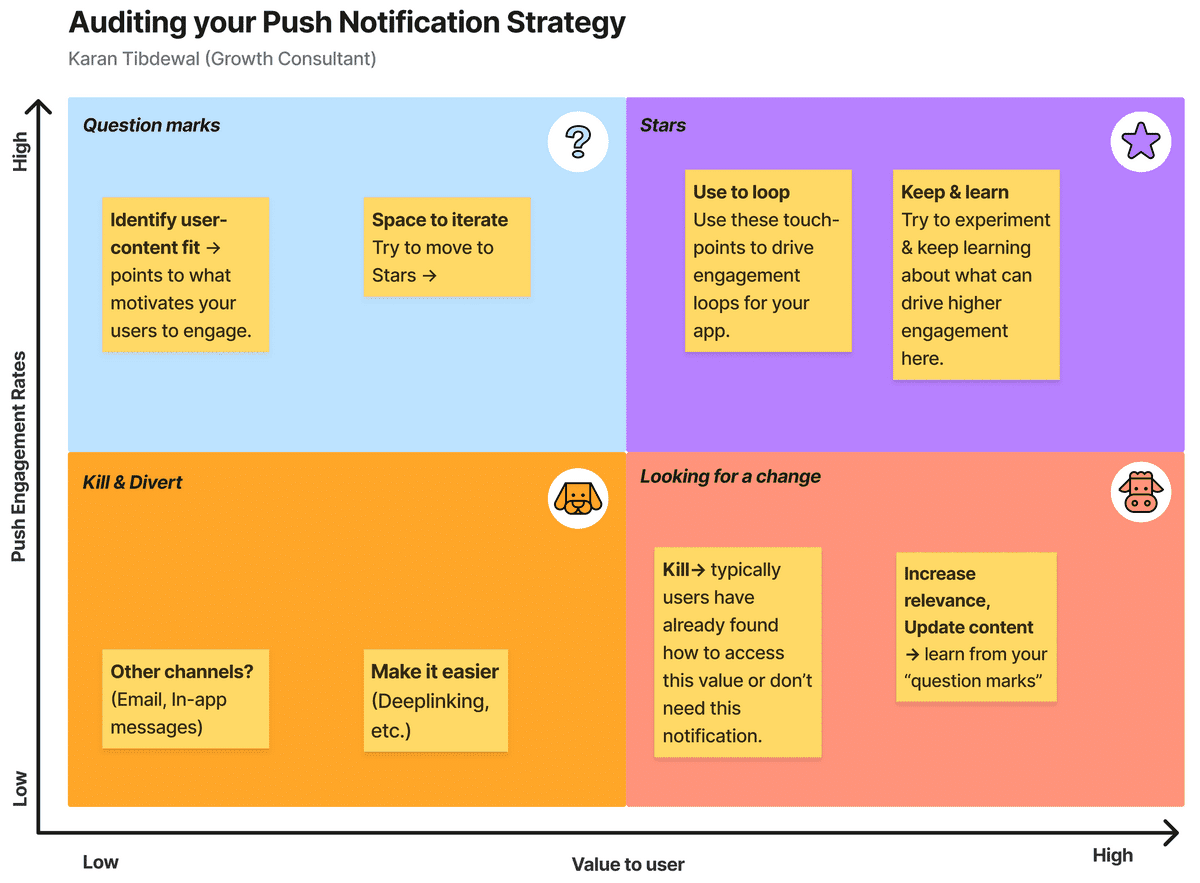2
min to read
Dec 4, 2023
Push notifications are a powerful tool for engaging users and driving retention, but they can also lead to fatigue and disengagement if not used responsibly. In this blog article, we will explore tips for maintaining a healthy subscriber base by avoiding over-saturation and fatigue, and discuss real-world examples of brands that have overused push notifications and experienced adverse effects.

Tips for Avoiding Push Notification Fatigue
Segment and personalize notifications: Send relevant notifications to the right users at the right time by segmenting your audience and tailoring messages to individual preferences and behaviors.
Reduce notification volume: Bombarding users with excessive notifications can lead to irritation and fatigue, causing them to disengage from your app or service. Find the optimal balance between informative and intrusive notifications.
Allow users to take control: Give users the option to manage their notification settings and preferences, allowing them to customize their experience based on their needs and preferences.
Consider the urgency of the alert: Be respectful of your users' time and avoid sending multiple push notifications for a single message when one longer-form email or update would suffice.
Leverage user data: Use browsing history, past interactions, and preferences to tailor notifications to individual users, and experiment with A/B testing to identify the most effective messaging, timing, and content.

Real-World Examples of Brands Overusing Push Notifications
Brand A: A mobile gaming app that sends excessive notifications, including in-app purchase offers, game updates, and friend invitations. This can lead to notification fatigue, causing users to disable notifications or uninstall the app.
Brand B: A news app that sends breaking news alerts, daily summaries, and personalized content recommendations multiple times a day. While these notifications may be informative, they can also be intrusive and lead to fatigue, causing users to disengage from the app.
Brand C: A fitness app that sends daily workout reminders, progress updates, and promotional offers. While these notifications may be helpful for some users, they can also be overwhelming and lead to notification fatigue, causing users to disable notifications or uninstall the app.
In conclusion, maintaining a healthy subscriber base requires a thoughtful and balanced approach to push notifications. By segmenting, personalizing, and reducing the volume of notifications, brands can minimize the risk of fatigue and disengagement while maximizing user retention and engagement.




